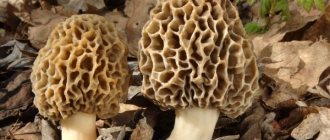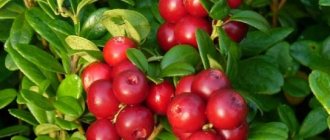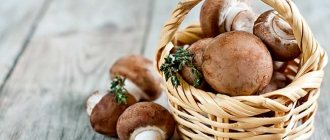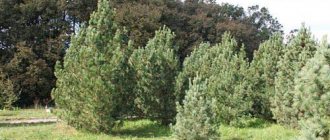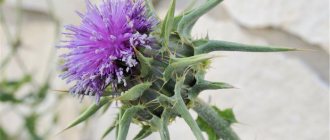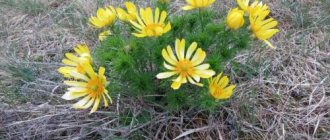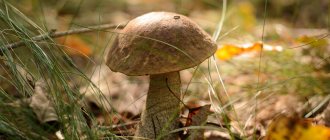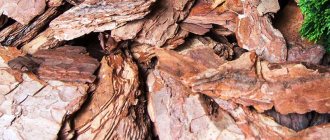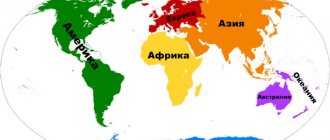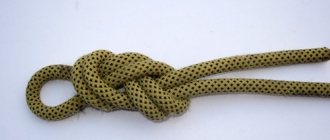Dandelion
The plant's leaves and roots are used as food. Before adding dandelion leaves to salads, pour boiling water over them to remove some of the bitterness (they are bitter) or soak them in salt water. You can make a coffee surrogate from the roots.
View dandelion recipes here
How to eat picans and what can be prepared from them
In the magazine “Living Antiquity” in 1903, Vsevolod Yanovich wrote in the essay “Permyaks”: “Only two dishes are prepared from pican: they are boiled in water and eaten hot, adding a lot of salt, or fermented and eaten cold with leaven.” Perhaps the author was not very well informed about the methods of preparing picana.
Puree soup, cutlets and pancakes are prepared from ground very young picana shoots. The stems are stewed, pickled, salted, and added to salads. Young leaves are added to cabbage soup and borscht instead of cabbage. There is an opinion that the word “borsch” comes from the official Russian name for pican – “hogweed”. After all, this soup was originally prepared with the leaves of this particular plant. And in the traditional cuisine of the Komi-Permyaks, shömashyd soup is popular, made from picans boiled in salt water and doused with kvass.
In the Urals, picans are prepared as follows: the leaves are often kept in a salty solution to remove excess bitterness. Then they are used in salads and together with nettles in soups. They are frozen, salted, made into purees and sauces.
Pican stems are pickled, fermented, and boiled, resulting in a broth with an almost mushroom aroma. Cucumbers are replaced with raw ones. The peeled stem is boiled with salt for 20-40 minutes. (depending on thickness), then add sour cream and eat. To ferment picanas, peeled and washed stems are placed in glass jars, interspersed with young shoots of pine needles (larch, fir, pine). Tamp tightly and fill with 6% salt solution almost to the top. After three days, add 2 tbsp. l. strain the brine from any pickled vegetables and put it in the refrigerator. After a week, the picans are ready.
Nettle
Nettle is a very common plant and has many beneficial properties. It should also be noted that nettle is a valuable medicinal plant. You can cook cabbage soup (leaves) from nettles and make main courses (after pouring boiling water over the leaves so that they do not prick). Can be eaten raw (lots of vitamins and microelements).
blooming Sally
Legends can be made about this plant, it is so healthy and nutritious. Koporye tea (as narrow-leaved fireweed was called) was previously exported abroad. They drank it everywhere in Rus', made flour from the roots, and used it for treatment.
Fermenting fireweed (to make tea)
Collection
We collect leaves in June-August (until pubescence).
Drying
The leaves need to be withered for further fermentation to proceed successfully. It is not recommended to wash the leaves. To wilt, simply lay the leaves on cotton fabric and turn them over. It is advisable to dry the leaves at home; the sun quickly dries the leaves. The readiness of a dried leaf is determined as follows: break the leaf into 2 parts; if you hear the crunch of the central core, then the leaf is not ready yet. On average, drying takes 1 daylight hours (about 12 hours).
Fermentation
The next stage will be fermentation, take the leaves and roll them in your palms until the leaves darken. We transfer the leaves into an enamel bowl in a layer about 10 cm thick (you can put pressure on top), cover the bowl with a linen rag after wetting it and put the pot of fireweed tea in a warm place to ferment.
Attention! You need to make sure that the fabric does not dry out; if it dries, wet it.
24 hours is enough for the tea to ferment and acquire the aroma that we expect from it.
Drying
Place on a baking sheet, after placing baking paper and stirring, dry in the oven at 110 degrees for about 2 hours. All our tea is ready and you can enjoy a very tasty, aromatic and healthy drink.
The roots can be made into flour if first dried and ground. The roots can be baked in a fire or boiled. The leaves make a delicious salad.
Quinoa
Quinoa is a plant of the amaranth family, very common in Russia. Quinoa saved many people from starvation during the war. They baked “green cakes” from quinoa, mixed it with flour, and made cutlets. Quinoa tastes almost tasteless, but is very nutritious.
In 100 g of quinoa:
- 368 kcal,
- 14.12 g protein,
- 64.16 g carbohydrates
- 6.07 g fat.
Fresh quinoa can be added to omelettes, soups, and main courses.
Quinoa seeds are used to prepare various cereals. Quinoa also has medicinal properties. It is better to use green quinoa for food. Quinoa can cause allergies.
Medicinal, edible and poisonous herbs of the Moscow region
The Moscow region is located within the forest belt (the extreme south of the taiga zone, the zone of coniferous-deciduous and broad-leaved forests) and the forest-steppe zone. Forests occupy over 40% of the region's territory; in some areas (mainly in the west, north of the region and in the far east) forest cover exceeds 80%; on the Moskvoretsko-Oka Plain it generally does not exceed 40%; in the southern Zaoksky regions it does not even reach 20%. Most of the region's territory is included in the mixed forest zone. The zone of broad-leaved forests includes territories located south of the Oka, with the exception of the southern part of the Serebryano-Prudsky district, which belongs to the forest-steppe zone. Along the low-lying right bank of the Moscow River, the zone of broad-leaved forests extends far to the north, almost to the borders of the city of Moscow. In the part of the Moskvoretsko-Oka Plain adjacent to the Moscow River, in the Zaoksky regions, as well as north of the Klinsko-Dmitrovskaya ridge, large areas are allocated for agricultural land.
In the very north of the Moscow region (in the territory of the Upper Volga Lowland) and partly in its western part (in the territory of Mozhaisky, Lotoshinsky and Shakhovsky districts), the most common transitional to coniferous-deciduous subnemoral or southern taiga coniferous forests, mainly spruce forests. The forests of Meshchera consist mainly of pine-spruce and pine forests; In the swampy lowlands there are isolated forests of black alder. The central and western parts of the region are occupied by coniferous-deciduous forests. Indigenous coniferous-deciduous forests in the Moscow region do not form a continuous belt, being most fully preserved on the Smolensk-Moscow Upland, especially on the slopes of the Klinsko-Dmitrovskaya ridge. The primary forests of Meshchera are green moss pine forests with a ground cover of blueberries and lingonberries; in waterlogged areas there are long-moss pine forests and sphagnum forests. Forests with a complex species composition with a significant admixture of small-leaved and, less commonly, broad-leaved species are common in Meshchera; such forests typically have rich undergrowth and dense grass cover. In addition, within Meshchera, in waterlogged areas, there are tracts of indigenous small-leaved forests (gray and black alder, birch, willow). For the Moskvoretsko-Oka Upland, secondary small-leaved forests are common, while coniferous-deciduous and broad-leaved forests are primary. In the Oka valley between Serpukhov and Kolomna, on the elevated left bank, there are steppe forests.
To the south there is a zone of deciduous forests, represented by oak groves scattered in small spots south of the Oka. The main tree species of the zone, in addition to oak, are linden, Norway, Tatarian and field maples, ash and two types of elm, in the undergrowth - hazel, European and warty euonymus, honeysuckle, brittle buckthorn, viburnum and other shrubs. In the floodplains of the rivers there are black alder forests, as well as forests of oak with an admixture of elm; in the Oka valley south of Kolomna there are floodplain meadows. The extreme south of the region (Serebryano-Prudsky district and partly Serpukhov district) are located in the forest-steppe zone; All areas of the steppe on the watersheds have been plowed, they are almost not preserved. Small areas of steppe meadows and meadow steppes are protected here in several reserves on the slopes of the Polosni, Osetra and other rivers. Linden and oak groves are occasionally found within the forest-steppe zone.
Swamps are most common in the Moscow region on the territory of the Upper Volga Lowland and in Meshchera - in the Shatursky and Lukhovitsky (in the east) regions. There are almost no natural floodplain meadows left.
The number of native plant species in the Moscow region is decreasing; some plant species are listed in the Red Book of Russia (water chestnut, lady's slipper, etc.).
Invasive species (for example, American maple) are becoming more widespread; Species that came from cultivation have also settled in large areas - Sosnovsky's hogweed, common columbine, impatiens glandular, giant goldenrod, etc. From November 2021, owners of land plots in the Moscow region are obliged, under threat of a fine, to independently destroy Sosnovsky's hogweed on them, which in addition time captured more than 320 km² of the region. Climatic zones: Dfb - cold (continental), no dry season, warm summer
Surepka
Many people know about this plant and many have tasted it. Crescent is a taste of childhood, when we spent all our free time outside and feasted on this plant. You can only eat young stems after peeling them; old colza turns into a “rope with many hairs.” It tastes very much like radish. Crescent can be added to soups, seasoned with it in dishes, as a seasoning (since it has a pronounced slightly bitter-burning taste)
SIBERIAN CORPG
A tall plant reaching more than two meters. The peeled stems have a pleasant sweetish taste. In spring, hogweed has tender leaves and stems, then mostly peeled stems are eaten. Before use, the greens are scalded with boiling water to remove the pungent odor. Use in any form, for example in soups or stewed vegetables.
Grows in wet meadows.
It should be remembered that not all types of hogweed are safe. Some of them can cause severe skin burns when touched, as well as blindness if the juice gets into the eyes. In this regard, it is highly recommended not to allow children to play with tubular stems and especially look through them.
Clover
Clover is a very nutritious plant that is used as food. Clover heads are eaten, salads and vitamin drinks are made from the leaves. This plant has many medicinal properties.
In the following articles we will talk about edible plant roots. Support the site, share information on social networks. Thank you
Edible forest plants
Plantain
Plantain is a small plant that can be found on roadsides. They grow everywhere in steppes and meadows, and can be found in wastelands and sandy soils. It is very easy to recognize a plantain: the leaves are collected in a rosette close to the ground, and several flower stems on top have a dense spikelet.
Everyone knows that plantain is good at stopping bleeding and healing wounds. The juice of the plant has disinfecting and anti-inflammatory properties. Plantain leaves are used in cooking. They can be added to salad or soup. Traditionally, in the middle zone it is customary to prepare teas and infusions from plantain. In Siberia, the seeds of the plant are stored and then fermented with milk. It turns out to be a very useful seasoning. In Europe, plantain is known as a vegetable plant; it can be found in garden beds.
